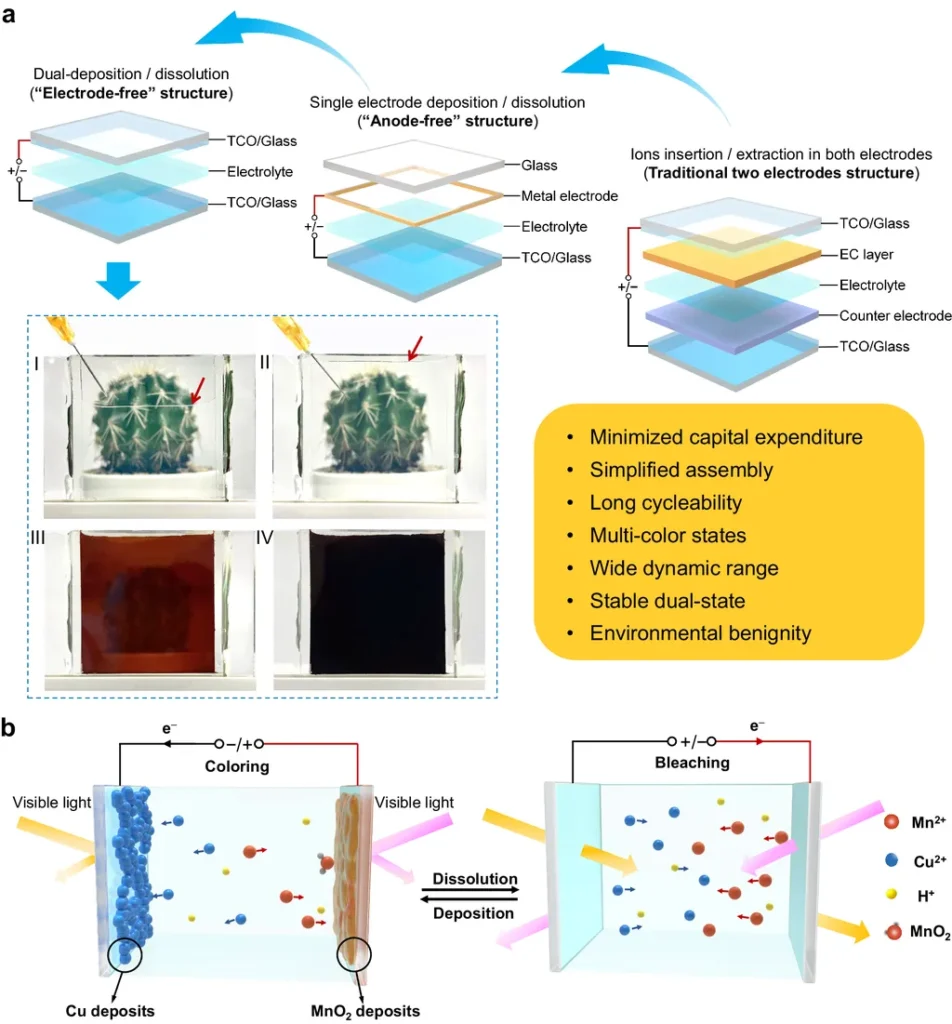In a significant stride toward enhancing energy efficiency and dynamic thermal management, researchers at the University of Louisville have developed a high-performance, all-solid-state electrochromic device. This innovation, detailed in a recent study published in the journal *Materials Research Express* (translated as “Expressions of Material Research”), promises to revolutionize applications ranging from smart windows to advanced thermal regulation systems.
The research, led by Bimal Nepal from the Department of Physics and Astronomy, focuses on overcoming the limitations of conventional electrochromic devices, which often suffer from slow switching speeds and limited optical contrast. Nepal and his team have engineered a device that exhibits remarkably faster switching times—8.2 seconds for coloring and 3.1 seconds for bleaching—compared to the typical 20 seconds to a few minutes observed in similar devices. “This advancement is a game-changer for the field of emissivity modulation,” Nepal explains. “Our device not only switches faster but also maintains robust performance under high-temperature conditions, making it ideal for practical, large-scale applications.”
The device is constructed using a stack of thin films, including layers of gold (Au), nickel oxide (NiO), tantalum pentoxide (Ta₂O₅), tungsten oxide (WO₃), and indium tin oxide (ITO). These layers were meticulously optimized through RF magnetron sputtering, a technique that ensures precise control over the film’s properties. The result is a device capable of achieving a maximum reflectance modulation of about 50%–60% across a broad wavelength range, from visible to infrared light.
The implications for the energy sector are profound. Electrochromic devices that can rapidly and efficiently modulate emissivity—how much heat a surface radiates—can significantly improve thermal management in buildings, vehicles, and even spacecraft. For instance, smart windows equipped with this technology could dynamically adjust their thermal properties to reduce energy consumption for heating and cooling, leading to substantial cost savings and reduced carbon emissions.
Moreover, the device’s all-solid-state construction ensures long-term stability and scalability, addressing a critical need for durable and reliable solutions in the energy sector. “The potential for this technology is vast,” Nepal notes. “From enhancing the efficiency of solar panels to improving the thermal comfort of buildings, the applications are limited only by our imagination.”
As the world continues to seek innovative solutions to the challenges of climate change and energy efficiency, this research represents a significant step forward. By pushing the boundaries of what is possible with electrochromic devices, Nepal and his team are paving the way for a future where dynamic thermal management is not just a luxury but a standard feature in our daily lives. With the study published in *Materials Research Express*, the scientific community now has a blueprint for developing next-generation emissivity control devices that could reshape the energy landscape.

